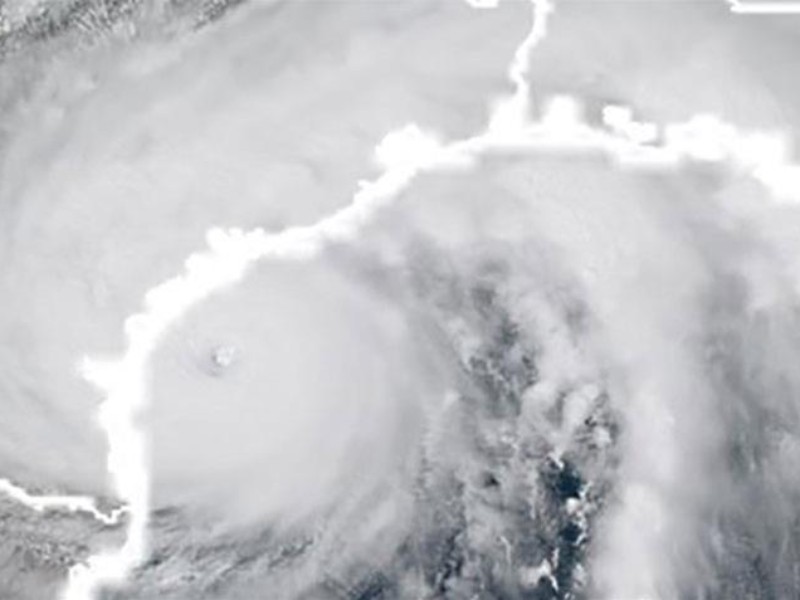Civil engineer and Incorporated MasterBuilders Association of Jamaica (IMAJ) executive Carvel Stewart said that while most concrete (or block and steel) buildings, especially those with concrete roofs, should hold their own against unruly hurricanes like Irma and Harvey, there is a serious issue that many of the buildings have not benefited from proper inspection by professionals employed to the municipal corporations, because of a shortage of personnel.
Hurricane Irma at Category 5, with winds of up to 185 miles per hour, destroyed the tiny island of Barbuda last week on its rampage across the eastern and northern Caribbean before moving on to Florida in the United States.
Described as one of the strongest Atlantic hurricane in history, Irma has been blamed for at least 46 deaths and billions of dollars in damage.
Before Irma’s passage, Harvey made landfall as a Category 4 hurricane with 130 mph winds near Rockport, Texas, in the United States on August 25, taking more than 71 lives and leaving a trail of destruction that US authorities estimate will cost more than US$70 billion to repair.
The ferocity of both storms has reopened debate as to whether meteorologists should start looking at a sixth category of hurricanes with winds well over the Category 5 limit of 157 mph.
Yesterday, Stewart, while pointing out the danger these powerful hurricanes to concrete buildings, expressed great concern about the structures in squatter settlements, especially those built with plyboard and zinc.
The former long-serving IMAJ president said that a good start to dealing with the situation would be to pass the Building Act, which has been in Parliament for more than two years now.
“Pass the Act as soon as possible, and promulgate a building code to ensure that we beef up resistance to these threats,” Stewart said.
He said that, while the industry can continue to use international building standards, there were issues peculiar to Jamaica which should be addressed by the regulations in the Building Act, which Local Government and Community Development Minister Desmond McKenzie said he is determined to have passed before the end of this year.
“I have no intention of waiting any longer for the debate to be resumed (in the House of Representatives),” McKenzie told the Jamaica Observer last night.
McKenzie, the former mayor of Kingston and a senator who has been pushing for the passage and implementation of the new Act and the accompanying Building Code for several years, noted that it has been two months since he opened the debate in anticipation of the hurricane season, and up to now the Opposition spokesman on local government Noel Arscott has not responded to his opening presentation.
“I have no intention of waiting any longer. It is two months now and we have been looking at the situation as it relates to climate change. I will indicate to the Speaker of the House tomorrow (today) that I intend to close the debate next week Tuesday,” he said.
McKenzie also announced in June that the Government is reviewing regulations accompanying the Disaster Risk Management Act, which was passed in Parliament in 2015. He said that the review is being done to strengthen the provisions and make the legislation more effective, particularly in relation to compulsory evacuations from areas deemed vulnerable to severe weather, such as hurricanes and tropical storms.
Kingston Mayor Delroy Wiliams agreed that the Kingston and St Andrew Municipal Corporation (KSAMC), which he chairs, is capable of effectively monitoring and inspecting building developments across the Corporate Area, although he admitted that the corporation could do a better job with an increase in building approval fees.
According to Mayor Williams, the KSAMC has been forced to find extra funding to meet the cost of inspections across the capital city because the fees it is allowed to charge are way below those that other municipalities, like Portmore, are able to charge for the work done by building inspectors.
“Somebody has to pay the building fees to meet these expenses and to ensure that the contributions conform with the standards that are there. It is in the interest of the people of Kingston and St Andrew to have an effective building and town planning department, but our rates are too far below the rates that are charged by other municipalities. They are between 15 and 100 per cent below, and we have to be trying to find other means to finance it,” Williams said.
But Stewart believes that a simple solution would be for local authorities, like the KSAMC, which are finding it difficult to finance building inspections, to contract private professionals to do the job and increase the fees to pay them, without employing full-time staff.
“Major projects need inspection, and they should be able to pay the fees,” Stewart said. “So engage the private sector to inspect and submit the reports, and the fees would remove the need for the overhead costs of having staff to do it.”
source: jamaicaobsever























